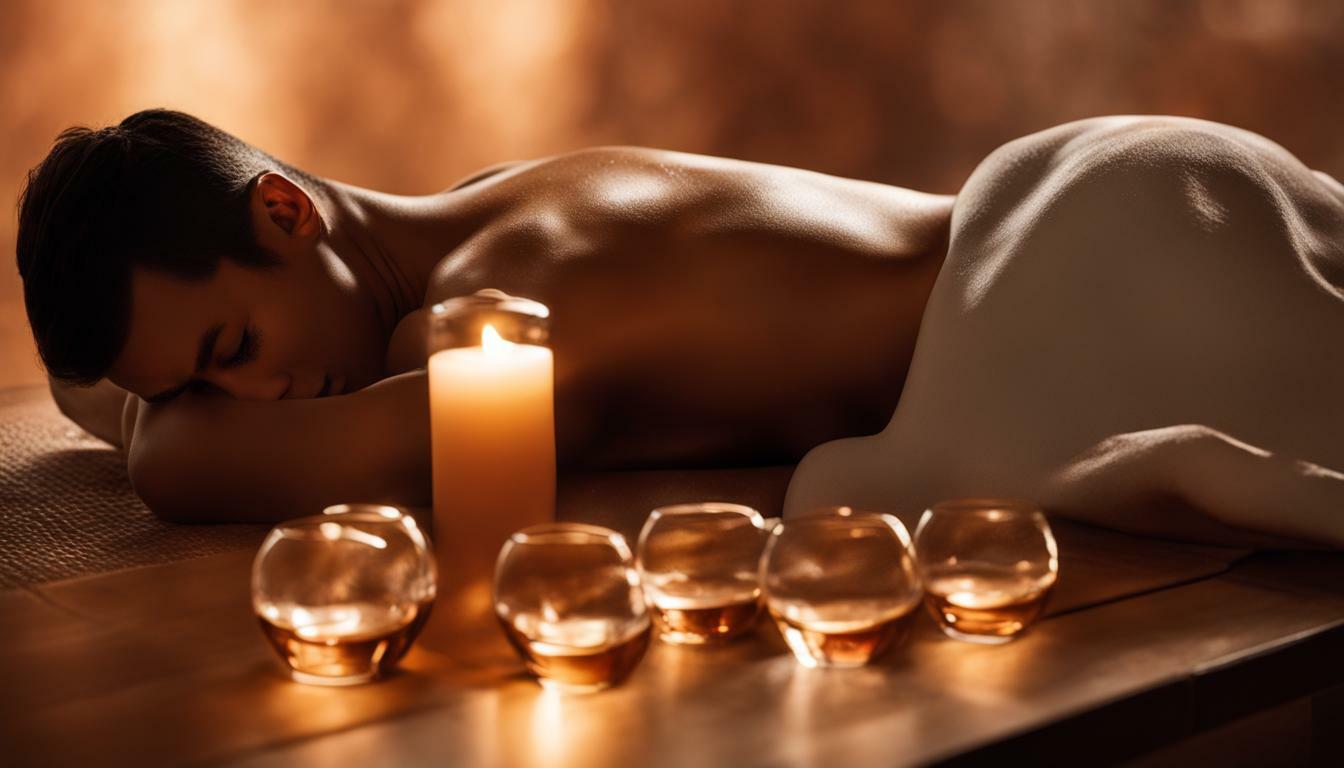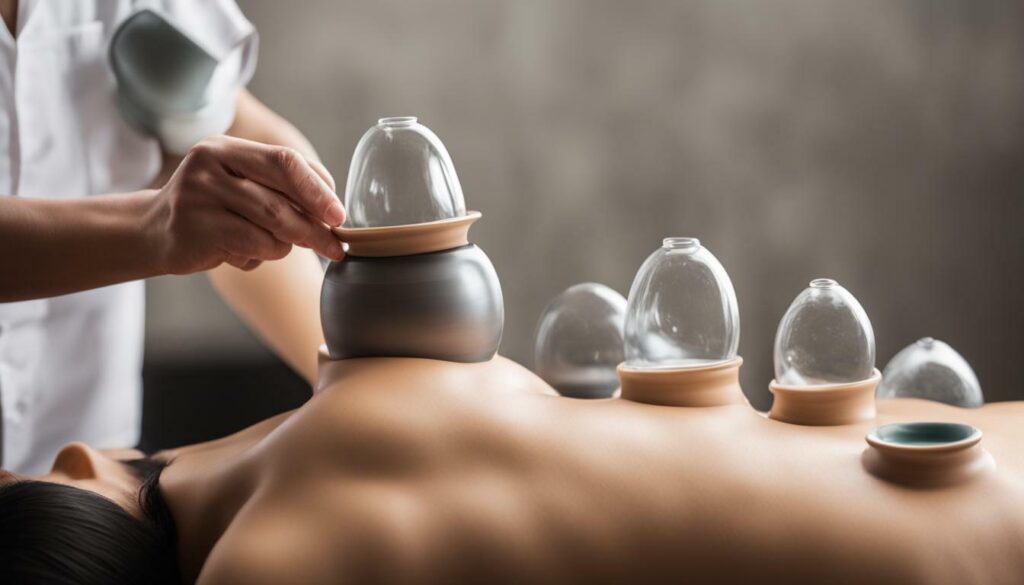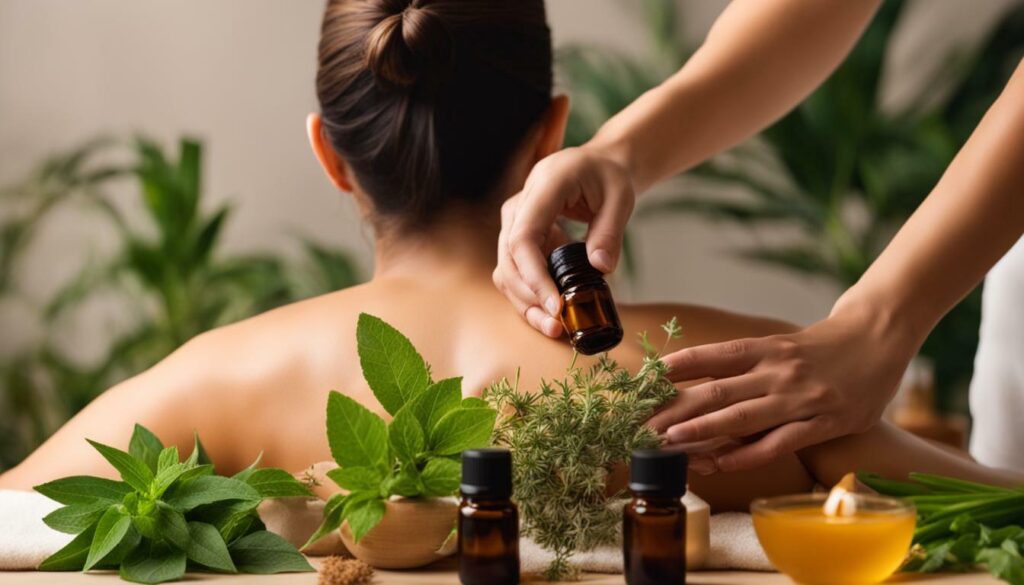
Cupping therapy is an ancient healing technique that has been used for thousands of years to relieve pain and promote healing. It involves placing suction cups on different parts of the body to draw blood towards the surface of the skin, increasing the body’s natural healing response. Cupping therapy is also known as cupping, cup therapy, or suction cup therapy.
Key Takeaways:
- Cupping therapy is an ancient healing technique that uses suction cups on specific areas of the body to draw blood towards the surface of the skin.
- The therapy may relieve pain ranging from arthritis to headaches, and improve overall blood flow and range of motion.
- Cupping therapy should be performed by trained healthcare professionals, and individuals should consult with their doctor before trying it.
What is Cupping Therapy?
Cupping therapy is an ancient healing technique that has been used for thousands of years to relieve pain and promote healing. The therapy works by using suction to draw blood to or away from specific areas of the body. It is mostly used to relieve conditions that cause pain, but some people also claim that it helps with chronic health issues.
Cupping therapy has several potential benefits, including reducing pain and inflammation, decreasing muscle tightness, improving blood flow, and increasing range of motion. However, experts are still exploring how cupping therapy eases pain and disease symptoms because there isn’t a lot of research on the subject.
There are different methods of cupping therapy, including:
| Method | Description |
|---|---|
| Dry cupping | The provider heats the inside of the cup using an alcohol-soaked cotton ball aflame or a suction device. The vacuum force pulls the skin up into the cup. |
| Running cupping | This method is similar to dry cupping, but before starting, the provider applies lotion or oil to the skin. The cups are then gently moved in different directions over the affected area. |
| Bleeding cupping | This method involves lightly puncturing the skin with a needle before placing the cups. This allows for the release of toxins through the suctioned blood captured in the cup. |
Providers may use glass, plastic, bamboo, ceramic, metal, or silicone cups for the therapy. After cupping, red, round marks may appear on the skin, but they are not true bruises that injure muscle fibers. These marks should fade in a week or two.
Cupping therapy usually does not cause pain, but some individuals may experience slight skin tightness during the procedure. Afterward, there may be slight bruising and soreness, but severe discomfort should not be experienced.
A variety of healthcare providers can receive training to perform cupping, including acupuncturists, chiropractors, massage therapists, medical doctors, and physical therapists. However, it is important to find a qualified cupping therapist.
The potential risks and complications of cupping therapy include bruising, burns from heated cups, fatigue, headaches, muscle tension or soreness, nausea, skin infections, itching, or scarring. In rare instances, fainting may occur after wet cupping for individuals who pass out with needle sticks.
Individuals who are pregnant or have specific health conditions such as anemia, pacemakers, bleeding disorders, blood clotting problems, cardiovascular disease, skin conditions, or seizures should not undergo cupping therapy.
Currently, the effectiveness of cupping therapy is mixed, and most healthcare providers recommend it as a complementary medicine treatment in combination with traditional Western medicine. More rigorous studies are needed to determine the effectiveness of cupping for pain relief.

If someone is considering cupping therapy, they should consult their healthcare provider to determine if it could help their specific symptoms, if there are other treatments they should try in addition to cupping, and if cupping is suitable for their individual situation. It is also important to find a qualified cupping therapist.
Conditions that Cupping Therapy May Relieve
Cupping therapy may ease symptoms of arthritis, including rheumatoid arthritis, back pain, neck pain, knee pain, shoulder pain, asthma and other breathing issues, carpal tunnel syndrome, gastrointestinal disorders like irritable bowel disease (IBD), headaches and migraines, and high blood pressure.
Experts are still exploring how cupping therapy eases pain and disease symptoms. However, it is believed that the suction from cupping draws fluid into the treated area, which expands and breaks open tiny blood vessels under the skin. This process stimulates proper healing and encourages healthier blood flow. Some people also believe that cupping releases toxins from the body.
| Cupping Therapy Methods | Description |
|---|---|
| Dry Cupping | The provider heats the inside of the cup using an alcohol-soaked cotton ball aflame or a suction device. The vacuum force pulls the skin up into the cup. |
| Running Cupping | This method is similar to dry cupping, but before starting, the provider applies lotion or oil to the skin. The cups are then gently moved in different directions over the affected area. |
| Bleeding Cupping | This method involves lightly puncturing the skin with a needle before placing the cups. This allows for the release of toxins through the suctioned blood captured in the cup. |
Providers may use glass, plastic, bamboo, ceramic, metal, or silicone cups for the therapy. After cupping, red, round marks may appear on the skin, but they are not true bruises that injure muscle fibers. These marks should fade in a week or two.
Cupping therapy usually does not cause pain, but some individuals may experience slight skin tightness during the procedure. Afterward, there may be slight bruising and soreness, but severe discomfort should not be experienced.
A variety of healthcare providers can receive training to perform cupping, including acupuncturists, chiropractors, massage therapists, medical doctors, and physical therapists.
The potential benefits of cupping therapy include reducing pain and inflammation, decreasing muscle tightness, improving blood flow, and increasing range of motion. However, there are also risks and complications involved, such as bruising, burns from heated cups, fatigue, headaches, muscle tension or soreness, nausea, skin infections, itching, or scarring. In rare instances, fainting may occur after wet cupping for individuals who pass out with needle sticks.
Individuals who are pregnant or have specific health conditions such as anemia, pacemakers, bleeding disorders, blood clotting problems, cardiovascular disease, skin conditions, or seizures should not undergo cupping therapy.
How Cupping Therapy Works for Pain Relief
Experts are still exploring how cupping therapy eases pain and disease symptoms because there isn’t a lot of research on the subject. However, it is believed that the suction from cupping draws fluid into the treated area, which expands and breaks open tiny blood vessels under the skin. This process stimulates proper healing and encourages healthier blood flow. Some people also believe that cupping releases toxins from the body.
There are different methods of cupping therapy, including:
| Method | Description |
|---|---|
| Dry cupping | The provider heats the inside of the cup using an alcohol-soaked cotton ball aflame or a suction device. The vacuum force pulls the skin up into the cup. |
| Running cupping | This method is similar to dry cupping, but before starting, the provider applies lotion or oil to the skin. The cups are then gently moved in different directions over the affected area. |
| Bleeding cupping | This method involves lightly puncturing the skin with a needle before placing the cups. This allows for the release of toxins through the suctioned blood captured in the cup. |
Providers may use glass, plastic, bamboo, ceramic, metal, or silicone cups for the therapy. After cupping, red, round marks may appear on the skin, but they are not true bruises that injure muscle fibers. These marks should fade in a week or two.
Cupping therapy usually does not cause pain, but some individuals may experience slight skin tightness during the procedure. Afterward, there may be slight bruising and soreness, but severe discomfort should not be experienced.
A variety of healthcare providers can receive training to perform cupping, including acupuncturists, chiropractors, massage therapists, medical doctors, and physical therapists.
The potential benefits of cupping therapy include reducing pain and inflammation, decreasing muscle tightness, improving blood flow, and increasing range of motion. However, there are also risks and complications involved, such as bruising, burns from heated cups, fatigue, headaches, muscle tension or soreness, nausea, skin infections, itching, or scarring. In rare instances, fainting may occur after wet cupping for individuals who pass out with needle sticks.
Individuals who are pregnant or have specific health conditions such as anemia, pacemakers, bleeding disorders, blood clotting problems, cardiovascular disease, skin conditions, or seizures should not undergo cupping therapy.
Different Methods of Cupping Therapy
There are different methods of cupping therapy, including:
| Method | Description |
|---|---|
| Dry cupping | The provider heats the inside of the cup using an alcohol-soaked cotton ball aflame or a suction device. The vacuum force pulls the skin up into the cup. |
| Running cupping | This method is similar to dry cupping, but before starting, the provider applies lotion or oil to the skin. The cups are then gently moved in different directions over the affected area. |
| Bleeding cupping | This method involves lightly puncturing the skin with a needle before placing the cups. This allows for the release of toxins through the suctioned blood captured in the cup. |
Providers may use glass, plastic, bamboo, ceramic, metal, or silicone cups for the therapy. After cupping, red, round marks may appear on the skin, but they are not true bruises that injure muscle fibers. These marks should fade in a week or two.
Cupping therapy usually does not cause pain, but some individuals may experience slight skin tightness during the procedure. Afterward, there may be slight bruising and soreness, but severe discomfort should not be experienced.

Cupping Therapy Materials and After Effects
Providers may use glass, plastic, bamboo, ceramic, metal, or silicone cups for the therapy. After cupping, red, round marks may appear on the skin, but they are not true bruises that injure muscle fibers. These marks should fade in a week or two. Cupping therapy usually does not cause pain, but some individuals may experience slight skin tightness during the procedure. Afterward, there may be slight bruising and soreness, but severe discomfort should not be experienced.
It is important to note that cupping therapy may have potential side effects. Along with the marks left on the skin, there may also be the risk of skin infections, itching, scarring, or burns from heated cups. In rare instances, individuals may experience fainting after wet cupping. The healthcare provider should explain the risks and have a plan in place to manage any side effects or complications that may occur.

It’s essential to keep a watchful eye on how the body reacts after the therapy and to report any unusual symptoms to the healthcare provider. In most cases, the side effects should be mild and manageable, and they should go away within a few days.
Discomfort and Providers of Cupping Therapy
Cupping therapy usually does not cause pain, but some individuals may experience slight skin tightness during the procedure. Afterward, there may be slight bruising and soreness, but severe discomfort should not be experienced.
A variety of healthcare providers can receive training to perform cupping therapy, including acupuncturists, chiropractors, massage therapists, medical doctors, and physical therapists. It is important to find a qualified cupping therapist to ensure that the treatment is safe and effective.
If you want to try cupping therapy, you can start by searching for “cupping therapy near me” to find a qualified therapist in your area. You can also ask your healthcare provider for recommendations or referrals.
Potential Benefits and Risks of Cupping Therapy
The potential benefits of cupping therapy include reducing pain and inflammation, decreasing muscle tightness, improving blood flow, and increasing range of motion. Cupping therapy may also help with conditions such as arthritis, back pain, neck pain, knee pain, shoulder pain, asthma and other breathing issues, carpal tunnel syndrome, gastrointestinal disorders like irritable bowel disease (IBD), headaches and migraines, and high blood pressure. However, it’s important to note that there is limited research on the effectiveness of cupping therapy, and more rigorous studies are needed.
Additionally, cupping therapy has some potential risks and complications. After cupping, red, round marks may appear on the skin, but they are not true bruises that injure muscle fibers. These marks should fade in a week or two. Cupping therapy usually does not cause pain, but some individuals may experience slight skin tightness during the procedure. Afterward, there may be slight bruising and soreness, but severe discomfort should not be experienced.
It’s also possible for individuals to experience burns from heated cups, fatigue, headaches, muscle tension or soreness, nausea, skin infections, itching, or scarring. In rare instances, fainting may occur after wet cupping for individuals who pass out with needle sticks. Therefore, it’s important to consult with a healthcare provider before undergoing cupping therapy to determine if it’s safe for your individual situation.
Who Should Not Undergo Cupping Therapy
Individuals who are pregnant or have specific health conditions should not undergo cupping therapy. It is important to consult with a healthcare provider before trying cupping therapy if an individual has:
- Anemia
- Bleeding disorders
- Blood clotting problems
- Cardiovascular disease
- Skin conditions such as eczema or psoriasis
- Seizures
- A pacemaker
Cupping therapy may not be suitable for individuals with these health conditions or any other conditions not listed. Consulting with a healthcare provider before undergoing cupping therapy is crucial to determine if it is safe and effective for an individual’s specific symptoms and situation.
Cupping therapy may also not be suitable for individuals who are taking blood-thinning medications, have open wounds, or have a fever.
It is important to note that cupping therapy may cause temporary bruising, soreness, or discomfort, but severe discomfort should not be experienced. If any unusual symptoms are experienced, it is recommended to seek medical attention immediately.
Cupping Therapy as Complementary Medicine
There is mixed evidence about the effectiveness of cupping therapy, and most healthcare providers recommend it as a complementary medicine treatment in combination with traditional Western medicine.
Proponents of cupping therapy believe that it can be beneficial for a wide range of health conditions, including chronic pain, respiratory issues, and digestive problems. However, more research is needed to determine the full extent of its benefits.
The potential benefits of cupping therapy include reducing pain and inflammation, decreasing muscle tightness, improving blood flow, and increasing range of motion. For individuals with chronic conditions, cupping therapy may reduce the need for pain medications and other traditional Western treatments.
It is important to note that there are also risks and complications involved with cupping therapy. These risks include bruising, burns from heated cups, fatigue, headaches, muscle tension or soreness, nausea, and skin infections. In rare instances, fainting may occur after wet cupping for individuals who pass out with needle sticks.
If someone is considering cupping therapy, they should consult their healthcare provider to determine if it could help their specific symptoms, if there are other treatments they should try in addition to cupping, and if cupping is suitable for their individual situation.
Because cupping therapy involves the use of suction cups and can be potentially harmful if performed incorrectly, it is essential to find a qualified cupping therapist. A variety of healthcare providers can receive training to perform cupping, including acupuncturists, chiropractors, massage therapists, medical doctors, and physical therapists.
While there is still much to learn about cupping therapy, many individuals have found it to be a beneficial complementary treatment for their pain and other health issues. With the help of a qualified healthcare provider, individuals can make an informed decision about whether cupping therapy is right for them.

Consultation and Finding a Qualified Cupping Therapist
If someone is considering cupping therapy, they should consult their healthcare provider to determine if it could help their specific symptoms. It is important to find a qualified cupping therapist who has received proper training to perform the therapy safely and effectively.
Individuals can start by asking their healthcare provider if they can recommend a qualified cupping therapist. They can also search for cupping therapy near me on online directories or contact local alternative medicine organizations for recommendations.
It is essential to ensure that the therapist is licensed and certified by reputable organizations and has experience treating the specific condition or symptoms for which the individual is seeking treatment. Before undergoing cupping therapy, individuals should discuss their medical history and any current medications with their healthcare provider and the cupping therapist.
Consulting with a healthcare provider and finding a qualified cupping therapist can help individuals determine if cupping therapy is right for them and ensure that they receive safe and effective treatment.
Conclusion
In conclusion, cupping therapy is an ancient healing technique used to relieve pain and promote healing. It involves placing suction cups on specific areas of the body to draw blood towards the surface of the skin. Cupping therapy may ease symptoms of arthritis, including rheumatoid arthritis, back pain, neck pain, knee pain, shoulder pain, asthma and other breathing issues, carpal tunnel syndrome, gastrointestinal disorders like irritable bowel disease (IBD), headaches and migraines, and high blood pressure.
While experts are still exploring how cupping therapy eases pain and disease symptoms, it is believed that the suction from cupping draws fluid into the treated area, which expands and breaks open tiny blood vessels under the skin. This process stimulates proper healing and encourages healthier blood flow.
There are different methods of cupping therapy, including dry cupping, running cupping, and bleeding cupping, and a variety of healthcare providers can perform the therapy. However, individuals who are pregnant or have specific health conditions such as anemia, pacemakers, bleeding disorders, blood clotting problems, cardiovascular disease, skin conditions, or seizures should not undergo cupping therapy.
While cupping therapy may have potential benefits such as reducing pain and inflammation, decreasing muscle tightness, improving blood flow, and increasing range of motion, there are also risks and complications involved, such as bruising, burns from heated cups, fatigue, headaches, muscle tension or soreness, nausea, skin infections, itching, or scarring.
Individuals should consult with their healthcare provider to determine if cupping therapy could help their specific symptoms, if there are other treatments they should try in addition to cupping, and if cupping is suitable for their individual situation. It is also essential to find a qualified cupping therapist.
In summary, cupping therapy can be an effective complementary medicine treatment for pain relief when performed by trained healthcare professionals. However, more rigorous studies are needed to determine its effectiveness, and individuals should seek guidance from their healthcare provider before trying cupping therapy.
FAQ
Q: What is cupping therapy?
A: Cupping therapy is an ancient healing technique that involves placing suction cups on different parts of the body to draw blood towards the surface of the skin, promoting healing and relieving pain.
Q: How does cupping therapy work?
A: Cupping therapy works by using suction to draw blood to or away from specific areas of the body. It is believed to stimulate proper healing, encourage healthier blood flow, and potentially release toxins from the body.
Q: What conditions can cupping therapy relieve?
A: Cupping therapy may relieve conditions such as arthritis, back pain, neck pain, knee pain, shoulder pain, asthma, carpal tunnel syndrome, gastrointestinal disorders, headaches, migraines, and high blood pressure.
Q: What are the different methods of cupping therapy?
A: The different methods of cupping therapy include dry cupping, running cupping, and bleeding cupping. Each method involves slight variations in technique and application.
Q: What materials are used for cupping therapy?
A: Cupping therapy can be performed using glass, plastic, bamboo, ceramic, metal, or silicone cups. After cupping, red, round marks may appear on the skin, but they are not true bruises and should fade within a week or two.
Q: Is cupping therapy painful?
A: Cupping therapy usually does not cause pain, but some individuals may experience slight skin tightness during the procedure. Afterward, there may be slight bruising and soreness, but severe discomfort should not be experienced.
Q: Who can perform cupping therapy?
A: Cupping therapy can be performed by a variety of healthcare providers, including acupuncturists, chiropractors, massage therapists, medical doctors, and physical therapists.
Q: What are the potential benefits of cupping therapy?
A: The potential benefits of cupping therapy include reducing pain and inflammation, decreasing muscle tightness, improving blood flow, and increasing range of motion.
Q: What are the risks and complications associated with cupping therapy?
A: Risks and complications of cupping therapy may include bruising, burns from heated cups, fatigue, headaches, muscle tension or soreness, nausea, skin infections, itching, or scarring.
Q: Who should not undergo cupping therapy?
A: Individuals who are pregnant or have specific health conditions such as anemia, pacemakers, bleeding disorders, blood clotting problems, cardiovascular disease, skin conditions, or seizures should not undergo cupping therapy.
Q: Is cupping therapy considered complementary medicine?
A: Cupping therapy is often recommended as a complementary medicine treatment in combination with traditional Western medicine. More research is needed to determine its effectiveness for pain relief.
Q: How should I find a qualified cupping therapist?
A: If you are considering cupping therapy, consult your healthcare provider for guidance. They can help determine if cupping therapy is suitable for your specific symptoms and recommend a qualified therapist.



